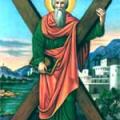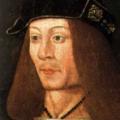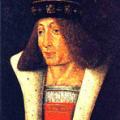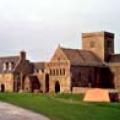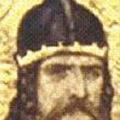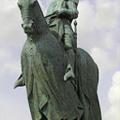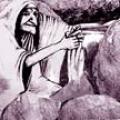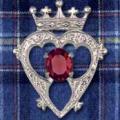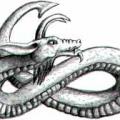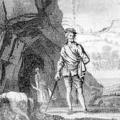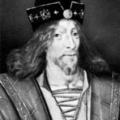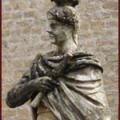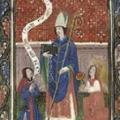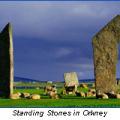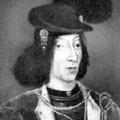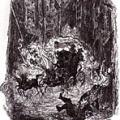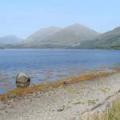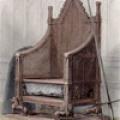Categories
Most Liked
Posted on July 17, 2013
by Amanda Moffet
by Amanda Moffet
Posted on May 12, 2013
by Chas Mac Donald
by Chas Mac Donald
Posted on August 29, 2013
by Amanda Moffet
by Amanda Moffet
Posted on February 6, 2013 by Donald | 6 views | comments
On the 30th of November St Andrews day is celebrated across Scotland and indeed around the world. So how did this most eligable of all saints come to be Scotland's patron saint?
Saint Andrew was one of the original Christian Apostles, he was the older brother of Saint Peter. The name 'Andres is t...
Posted on February 7, 2013 by Donald | 6 views | comments
The son of King James III and Margaret of Denmark, he was probably born in Stirling Castle. When his father was killed at the Battle of Sauchieburn on June 11, 1488 the fifteen-year-old James took the throne and was crowned at Scone, Perthshire on June 24. The rebels who had gathered at Sauchiebur...
Posted on February 7, 2013 by Donald | 6 views | comments
James II, the son of James I of Scotland and of Joan Beaufort had an elder twin, Alexander Stewart, Duke of Rothesay, who lived long enough to receive a knighthood, but died in infancy. James II gained the nickname "Fiery face" because of a conspicuous vermilion birthmark on his face. James had si...
Posted on February 6, 2013 by Donald | 5 views | comments
Despite his name meaning ‘dove’, Columba was banished from Ireland in 563, aged forty two, for leading battles against greedy Irish monasteries. With twelve supporters he sailed in a curragh to Iona, the island lying a kilometre south-west of the end of Mull.
He crowned his fellow Irishman Aidan Ki...
Posted on February 6, 2013 by Donald | 5 views | comments
The Danes, already well-established through the Hebrides and on the mainland and supported with on-going North Sea crossings, battled with Alba’s Picts in 839 and utterly defeated them.
The North of Scotland experienced a gradual population migration, under the Norse pressure, with the Scots of the...
Posted on February 6, 2013 by Donald | 5 views | comments
In 1304, John Comyn II, known as the Red Comyn after his grandfather, moved his allegiance over to England’s Edward I and sat on his ‘Scottish Council’.
When Robert the Bruce set his plans to resume the War of Independence in 1306, he and Comyn met together in southerly Dumfries at the isolated Fran...
Posted on February 6, 2013 by Donald | 5 views | comments
Its a dark evening and you find yourself wandering in the gathering gloom along the side of a small highland stream. You are alerted by some movement down near the water and spot an old woman apparently washing clothes in the stream. You may be tempted to wander down to the side of the stream and ...
Posted on February 6, 2013 by Donald | 5 views | comments
The Royal Mile is a long cobbled street that runs down from Edinburgh castle to the palace of Holyrood. When Edinburgh castle was first established this was the only accessible route, the castle’s situation on the dark rocky plug of an extinct volcano made it impregnable from all but the east wher...
Posted on February 7, 2013 by Donald | 5 views | comments
Never mind Nessie, the scariest creature ever to roam Scotland was the infamous Linton Worm.
A 'Worm' was another term used for a dragon (orme or worme is the ancient Norse for serpent), and the Linton worm lived in a hollow on the Northeast side of Linton Hill. This area is still known as 'Worm'...
Posted on February 7, 2013 by Donald | 5 views | comments
In recent times the stories of Hannibal Lecter and the real life horrors of Jeffrey Dahmer have provided chilling accounts of cannibalism. However, Scotland can lay claim to one of the most gruesome horror tales ever recounted - the legend of Sawney Bean.
Sawney Bean was born in East Lothian appro...
Posted on February 7, 2013 by Donald | 5 views | comments
James I was king in name only.
Born on December 10, 1394, the son of Robert III and Annabella Drummond. He had an eventful childhood. In 1402 his elder brother, David, starved to death in prison at Falkland in Fife. Before the death of his father in 1406 the authorities sent James to France for ...
Posted on February 6, 2013 by Donald | 4 views | comments
Julius Agricola was sent in the year AD77 to be governor of Britain for the Roman Empire. He pushed the Empire's reach northwards with advances to the valley crossing Scotland from the Clyde to the Forth in AD80. He enforced the front with a row of forts before continuing with campaigns up the east ...
Posted on February 6, 2013 by Donald | 4 views | comments
When Bede’s Historia Ecclesiastica was written in 731, it named Ninian as the first Scottish Christian. The Romans left Britain with traces of their Christianity remaining.
Ninian, the son of a Scottish chief, was trained as a bishop by the Romans before founding a church at Whithorn in Galloway wh...
Posted on February 6, 2013 by Donald | 4 views | comments
For six centuries the Orkney and Shetland Islands remained under Norwegian sovereignty, geographically central in a sea-faring Scandinavian civilisation which reached across the Atlantic.
The earldom of the islands was of great Norwegian importance. In the fifteenth century however, Norway had fall...
Posted on February 6, 2013 by Donald | 4 views | comments
James III’s policies infuriated many noble families, whilst drawing closer to him many more.
His unhappy opponents won to their side the King’s son, fifteen year old Prince James, and made it known that they intended to install him as monarch. This was the motivation behind the battle on 11 June at ...
Posted on February 6, 2013 by Donald | 4 views | comments
Major Weir - The Wizard of the West Bow The narrow winding streets and dark cavernous closes of Edinburgh can feel eerie enough at night as you walk alone. But listen out for the wrap of a cane on the cobbles and look out for a dark shadowy figure for it may be the ghost of Major Weir -The Wizard ...
Posted on February 6, 2013 by Donald | 4 views | comments
In the years after the Jacobite uprising of 1745, the terrible reputation of the government troops or 'Redcoats' as they sought to finally put down once and for all the brave highland clans was spread throughout the North of Scotland. One story concerning a poor milkmaid and a wicked redcoat serge...
Posted on February 7, 2013 by Donald | 4 views | comments
I'm sure most of our readers have either read Dan Brown's book 'The Davinci Code' or at least watched the film of the same name. The connection with Scotland is seen as the story reaches it's climax in the enigmatic Roslyn Chapel. The tale of intrigue surrounding an ancient biblical artefact is a ...
Featured Articles
Most Discussed
Posted on July 16, 2013
by Amanda Moffet
by Amanda Moffet
Posted on February 6, 2013
by Donald
by Donald
Posted on July 17, 2013
by Amanda Moffet
by Amanda Moffet


 View More
View More View Less
View Less